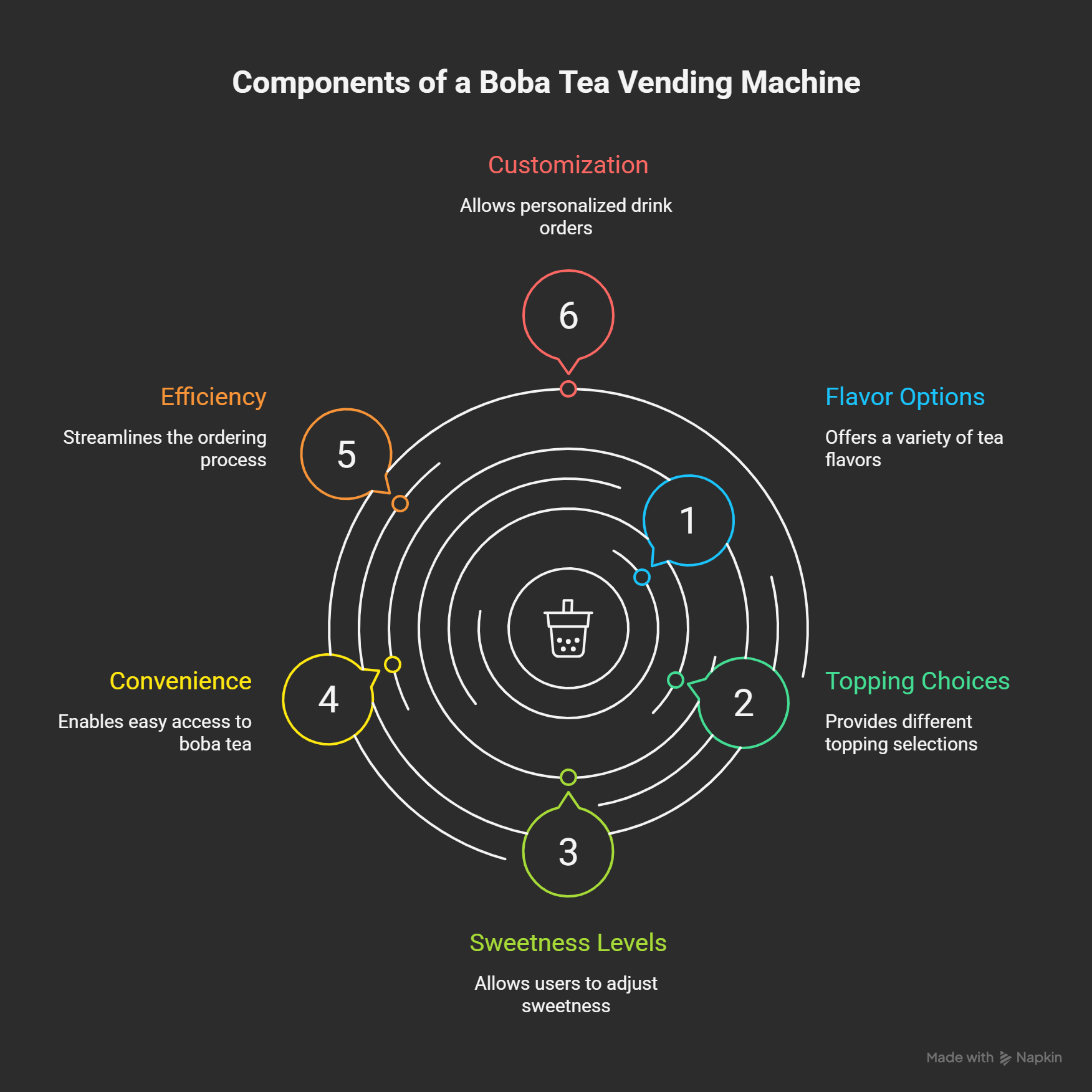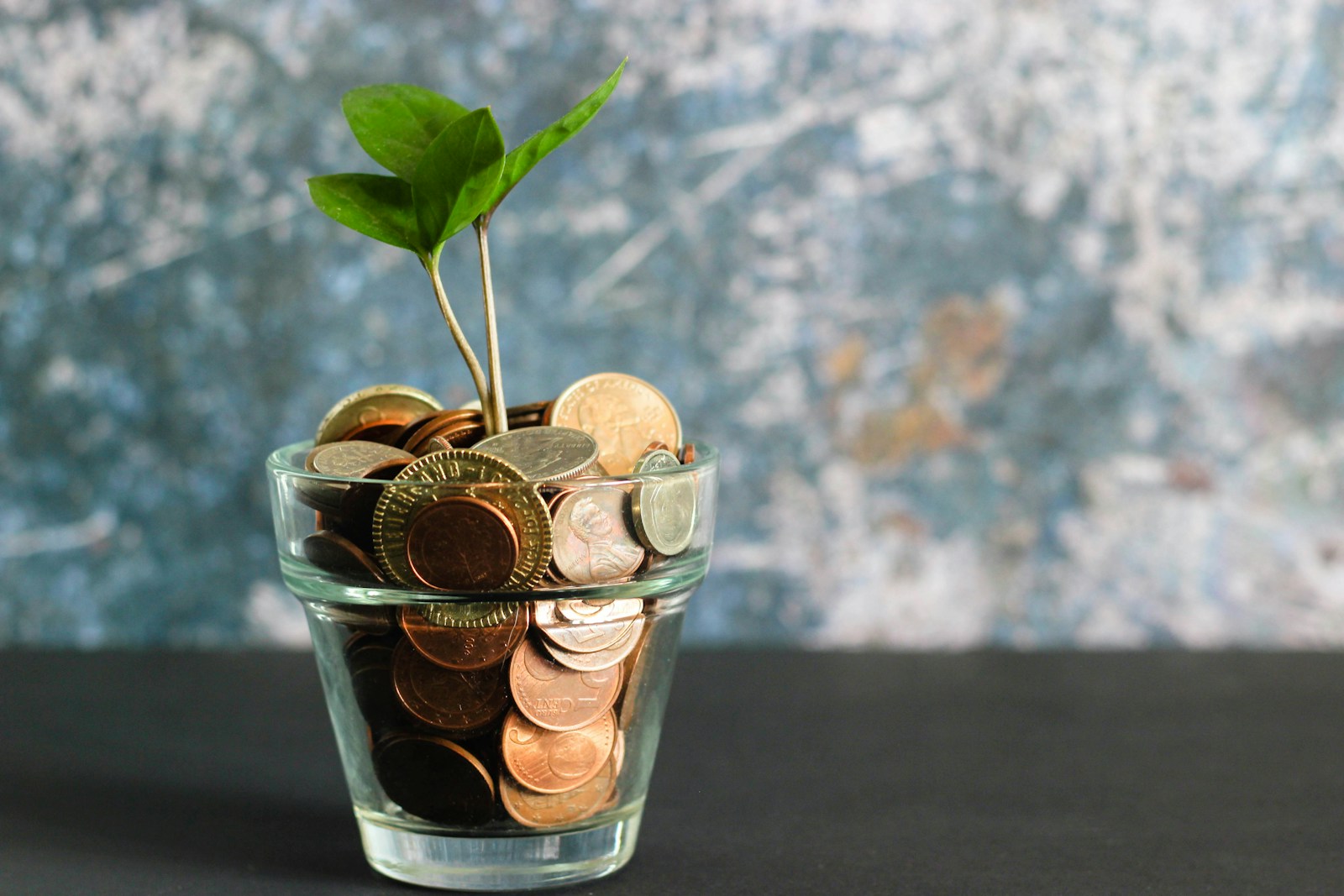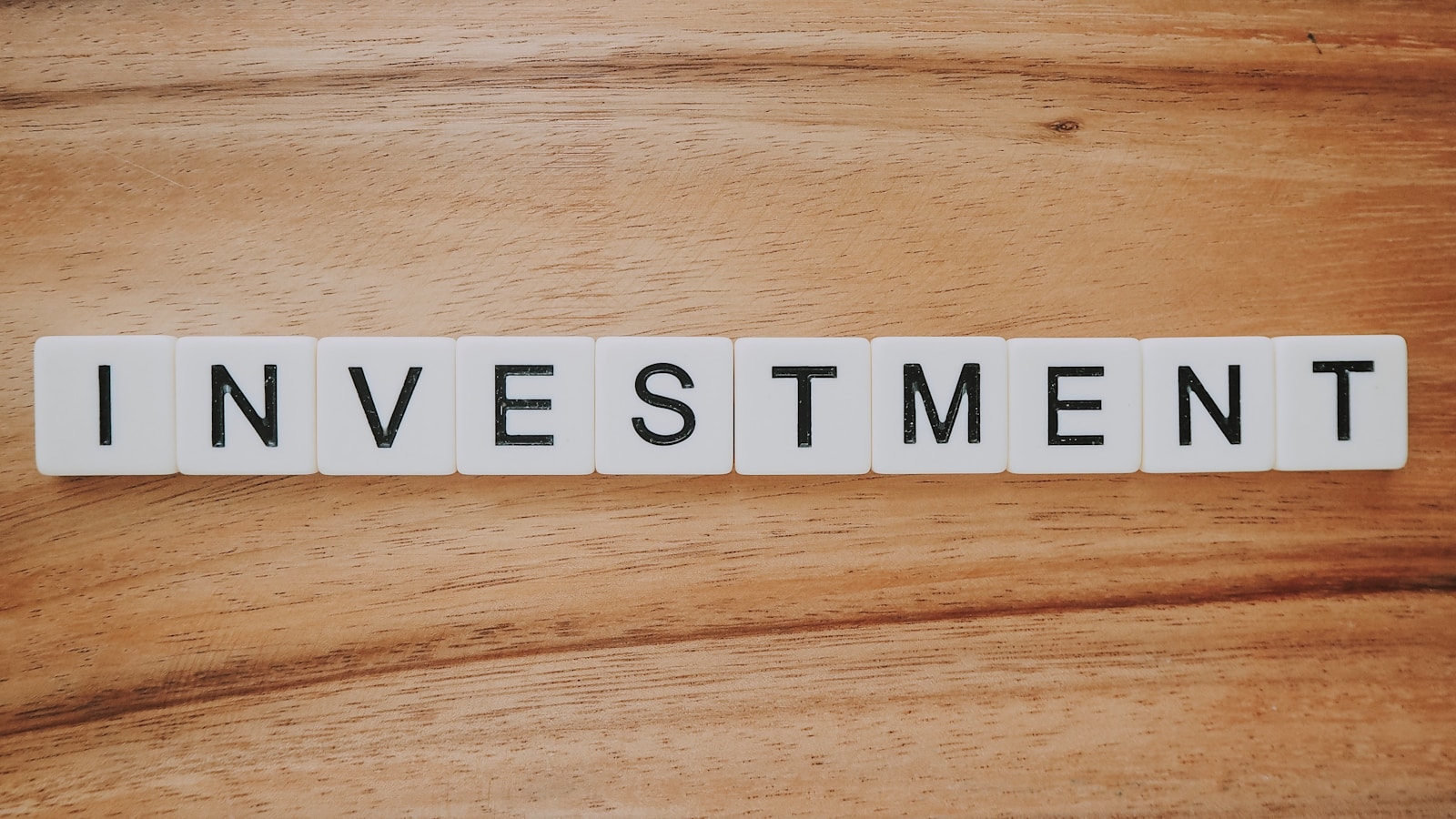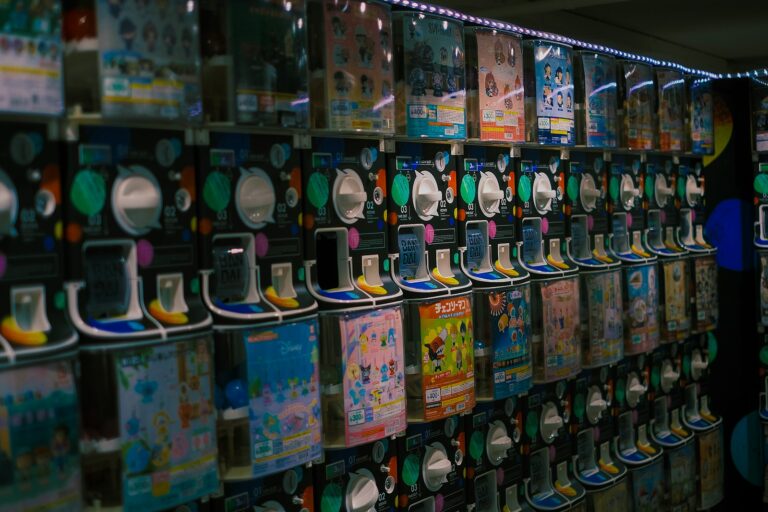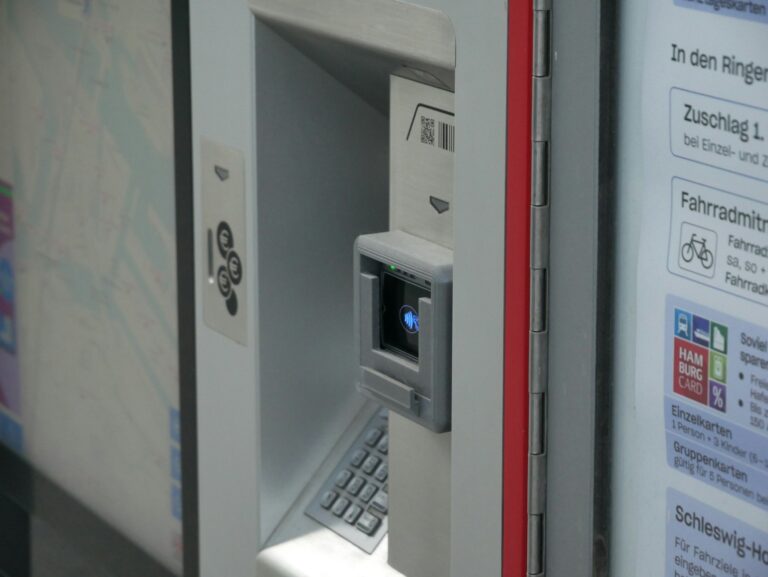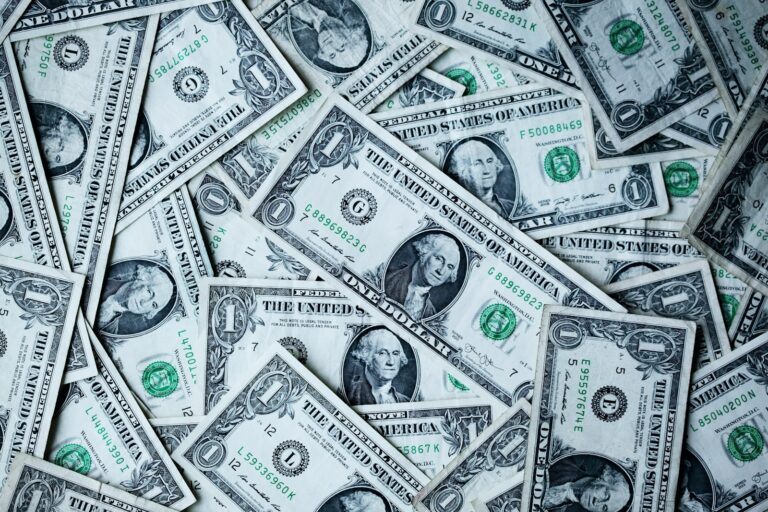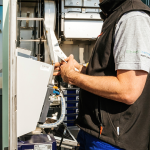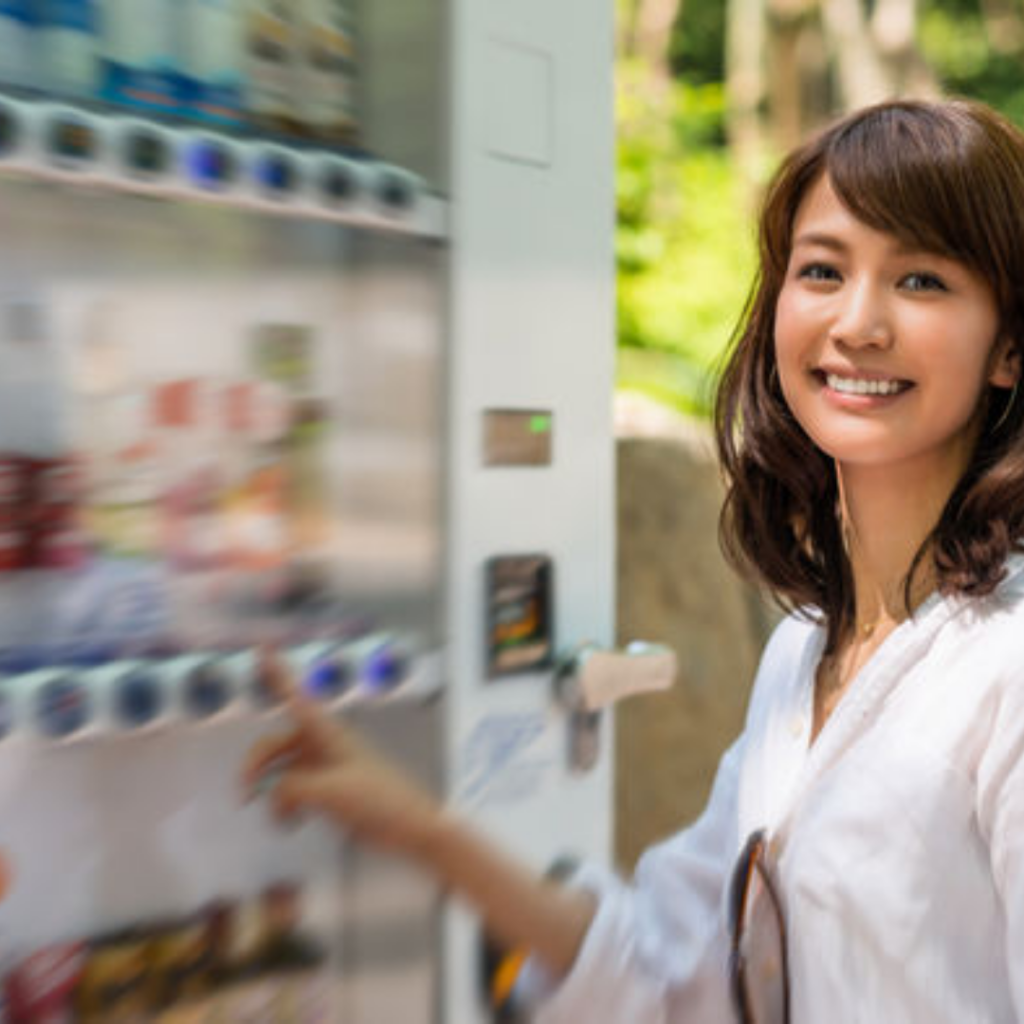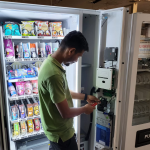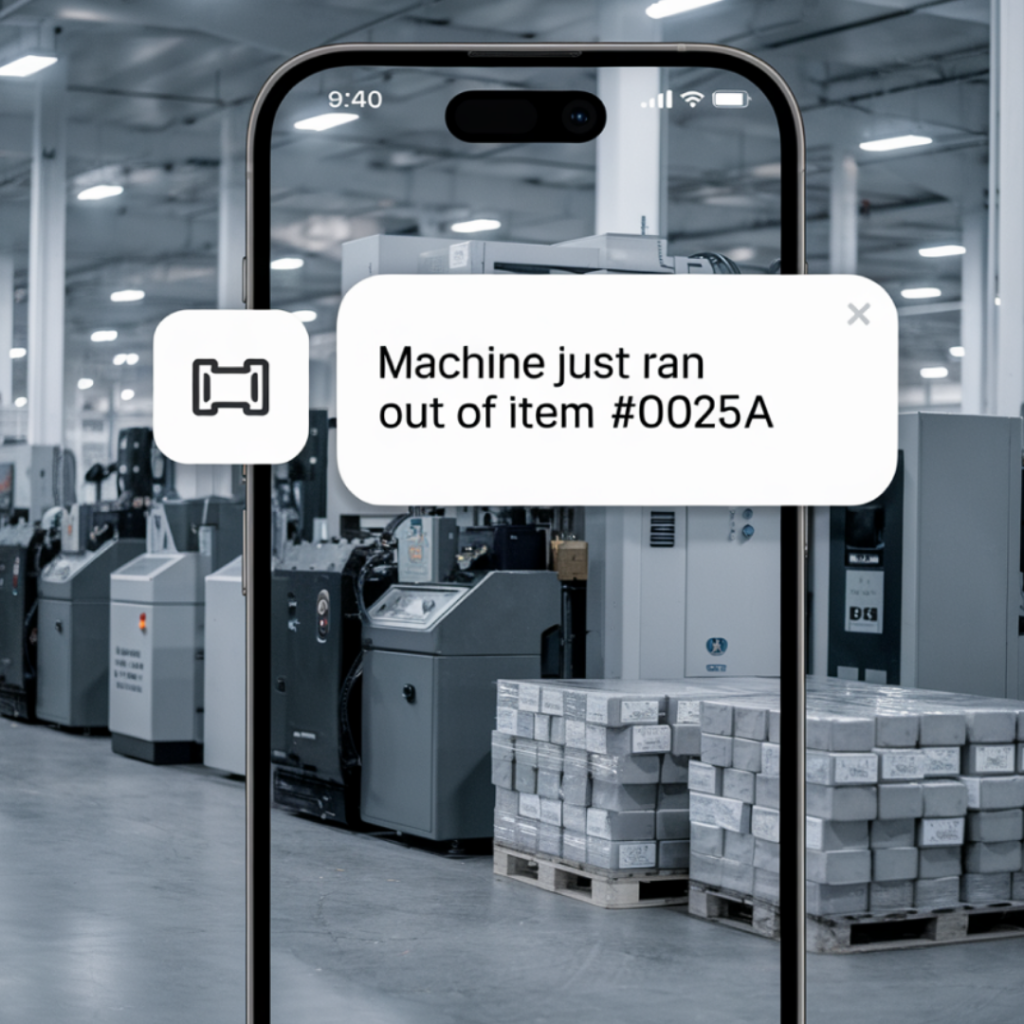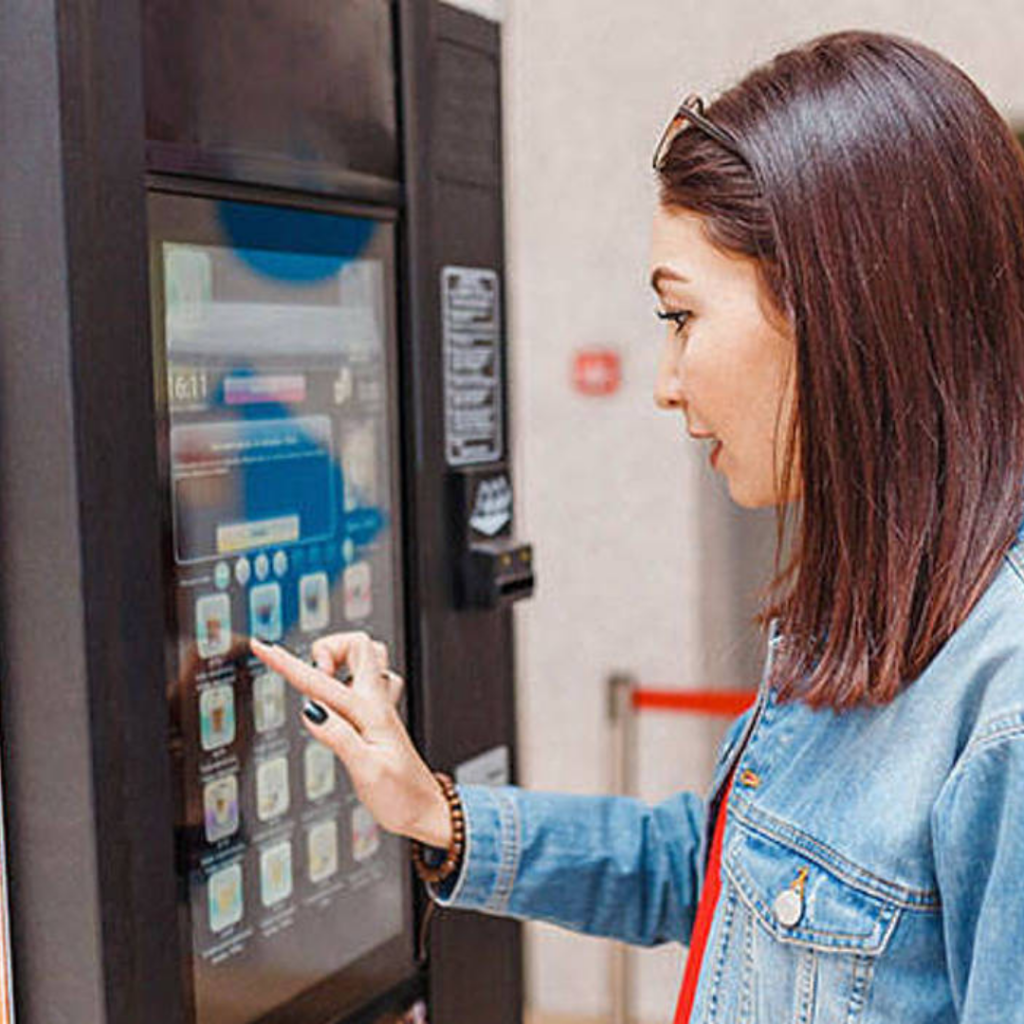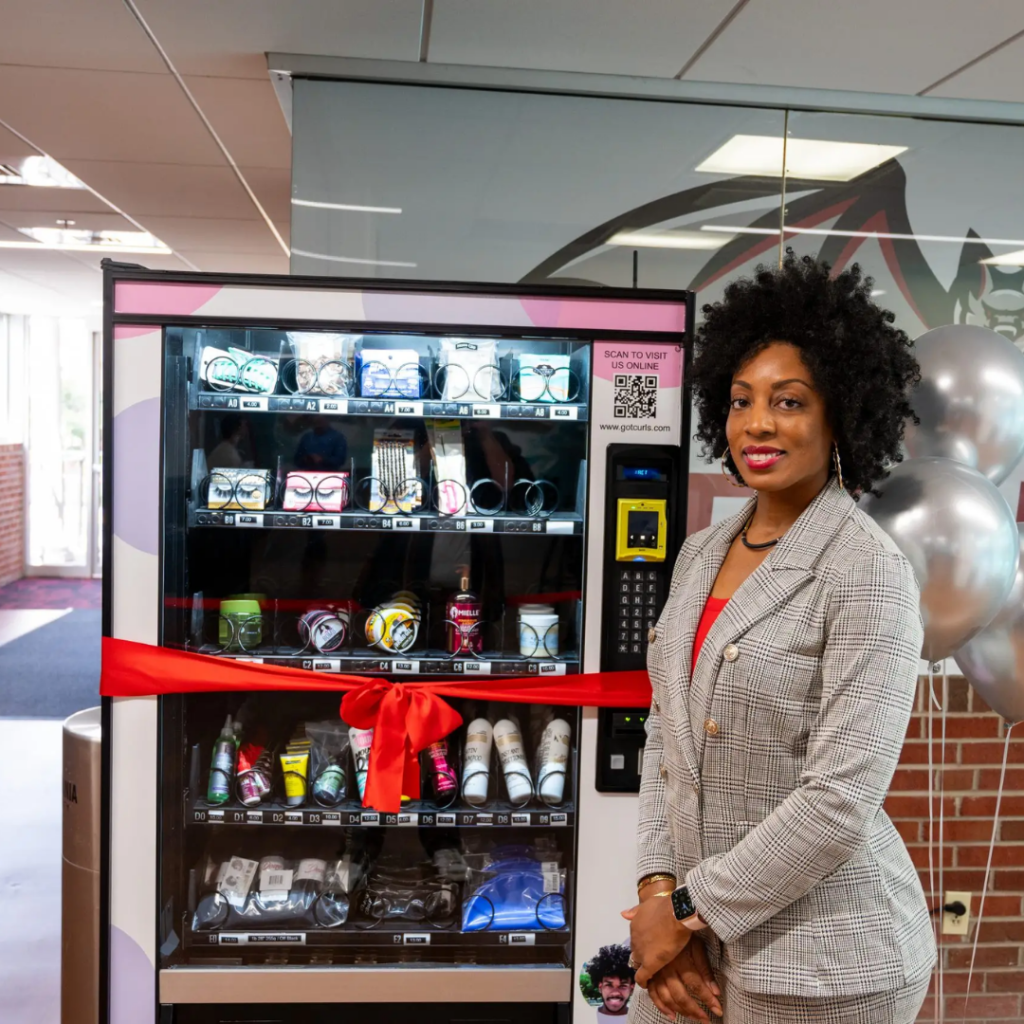Export ready American built machines in stock, shipping from Miami
Are Boba Tea Vending Machines Profitable?
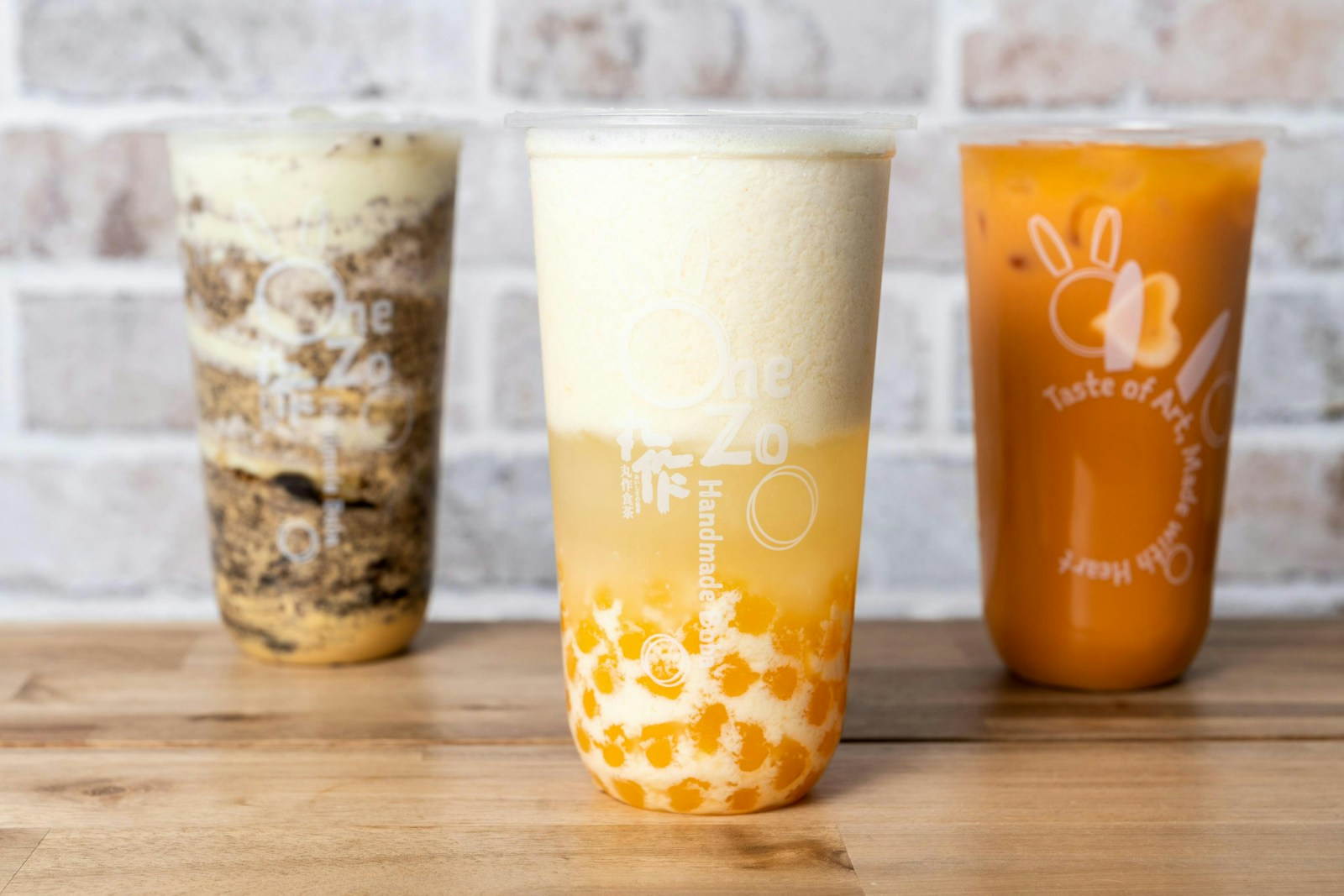
Yes, boba tea vending machines can be profitable when placed in the right locations and managed strategically. These machines merge two fast-rising trends: the booming demand for bubble tea and the rapid shift toward automation in retail. With minimal labor and high product appeal, they offer operators a business that can run efficiently all day, every day.
The traditional boba tea shop model relies on staff, rent, and training. In contrast, a boba tea vending machine delivers the same product quality with greater consistency and almost no staffing. It prepares milk tea or fruit tea within minutes, seals the cup, and dispenses it ready to serve. This makes it ideal for airports, malls, schools, and office buildings where customers want fresh, high-quality drinks without waiting in line.
Modern new vending machines powered by smart technology are reshaping the beverage industry. They allow operators to monitor performance remotely, update menus through the cloud, and handle cashless payments. This guide explains how these systems make money, what it costs to get started, how long it takes to recover investment, and what determines success in this fast-growing automated market.
What Is A Boba Tea Vending Machine?
A boba tea vending machine is an automated system that prepares and serves fresh boba drinks without staff supervision. It uses advanced technology to combine tea bases, milk, creamer, and toppings such as tapioca pearls, popping boba, or jelly in precise proportions. Within one minute, the machine produces a fully sealed, café-quality drink ready for customers to grab and enjoy. These systems bridge the gap between convenience and quality, making them ideal for airports, offices, schools, and shopping centers.
Main Components And Function
- Ingredient Canisters: Store tea powders, flavor syrups, and toppings for consistent portioning.
- Refrigerated Chamber: Keeps milk and perishable ingredients fresh for longer operation hours.
- Sealing And Shaking Unit: Blends ingredients evenly and seals the cup for easy, spill-free service.
- Touchscreen Display: Allows customers to select flavors, sweetness levels, and toppings.
- Cashless Payment System: Supports cards, QR codes, and digital wallets for quick transactions.
Types Of Boba Tea Machines
- Compact Boba Tea Machine: Perfect for small offices or gyms, offering 3–5 preset drinks such as milk tea, taro, or matcha with minimal maintenance.
- Full-Scale Boba Tea Vending Machine: Built for malls, airports, or universities, supporting 10–15 drink variations, multiple toppings, and automatic cleaning features for non-stop service.
Modern boba tea vending machines integrate smart technology, remote monitoring, and real-time inventory control, allowing operators to manage multiple units efficiently. Their modular design, automatic maintenance alerts, and reliable construction make them suitable for both small businesses and large-scale automated retail setups.
Cost, Revenue, And Profitability Analysis
Profitability for a boba tea vending machine depends on balancing investment cost, location, and product sales. These machines have higher initial costs than snack or drink machines but also deliver higher per-cup earnings, faster payback periods, and stronger long-term margins.
Initial Investment
- Compact Machines: Semi-automatic models that mix and dispense pre-flavored teas typically cost between $10,000 and $15,000.
- Fully Automated Machines: Advanced systems with heating, cooling, and topping dispensers range between $18,000 and $25,000.
- Additional Setup Costs: Include shipping, installation, digital branding, and optional payment upgrades like card readers or QR modules.
Even at the higher end, the total investment is significantly lower than opening a traditional boba tea shop, which may exceed $150,000 in rent, labor, and equipment costs. This makes a boba tea vending machine a more practical choice for entrepreneurs or vending operators seeking high margins with minimal overhead.
Operating Costs
- Ingredient Cost Per Drink: $1.00–$1.50, including tea, milk, toppings, sugar, and cups.
- Retail Price Range: $5.50–$7.00 per serving, creating a 70% average gross margin.
- Energy Use: Typically 800–1,500 watts per cycle, depending on cooling and heating systems.
- Maintenance: Low, due to modular components and automated self-cleaning systems.
Operators can monitor ingredient levels, performance, and temperature remotely using smart cloud systems, reducing the need for physical inspections. This level of automation allows one person to manage multiple machines efficiently, further lowering operating costs.
Break-Even And ROI
- Average Payback Period: 12–18 months, depending on drink volume and site quality.
- Example Scenario: Selling 35 drinks daily at $6.50 each equals approximately $6,800 in monthly revenue and $2,500–$3,000 net profit after costs.
- High-Traffic Sites: Malls, campuses, and airports can accelerate ROI, reaching payback in less than a year.
Because customers frequently repurchase, boba tea vending machines maintain consistent sales and outperform snack or beverage units in both transaction value and customer retention. With a strong location, appealing flavors, and proper maintenance, they can become reliable income sources in the growing automated food and beverage sector.
The Three Profitability Pillars
Success with a boba tea vending machine depends on three critical pillars: location, product mix, and machine reliability. These factors work together to determine how much revenue your machine can generate each month and how quickly you recover your investment. When managed correctly, they turn a single unit into a high-performing, consistent income source.
1. Location
Location has the strongest impact on profitability. Placing your boba tea vending machine in high-traffic areas with a younger, trend-focused demographic dramatically improves daily sales. Bubble tea is especially popular among Gen Z and millennials, who prefer convenient, customizable drinks they can grab quickly between activities.
- Ideal Venues: Universities, shopping malls, train stations, airports, gyms, and corporate campuses.
- Key Factors: Foot traffic volume, visibility, electricity access, and cleaning logistics.
- Revenue Share: Site owners often take a small percentage (5–15%), which is manageable with proper pricing.
Operators using cloud-based systems can track performance by location, allowing them to compare sales and move underperforming units easily. This data-driven approach helps identify high-yield spots and reduce wasted effort.
2. Product Mix And Menu Customization
One of the main advantages of a boba tea vending machine is its ability to serve multiple drink types from a single unit. Offering popular flavors, seasonal items, and customizable options helps attract repeat customers and boost average spend per transaction.
- Top-Selling Flavors: Classic milk tea, taro, matcha, brown sugar, mango, and strawberry fruit tea.
- Toppings And Add-Ons: Tapioca pearls, jelly cubes, popping boba, and pudding options.
- Customization: Machines can store multiple powders and syrups to create up to 15–20 drink combinations.
- Upselling: Larger cup sizes or extra toppings increase per-cup profit by 20–30%.
Variety helps maintain long-term engagement, but simplicity ensures faster service and easier maintenance. The most profitable operators balance both by offering a limited but appealing menu of bestsellers that require minimal restocking effort.
3. Technology And Machine Reliability
Modern boba tea vending machines rely on advanced technology that directly supports uptime, efficiency, and customer satisfaction. Smart sensors, automated cleaning systems, and reliable dispensing modules ensure smooth daily operations and consistent beverage quality.
- Cloud Integration: Operators can monitor temperature, sales data, and inventory levels in real time.
- Smart Maintenance Alerts: The machine automatically reports low stock or service needs to minimize downtime.
- Cashless Payment Options: Support for credit cards, Apple Pay, and QR codes improves accessibility and increases purchase frequency.
- Stable Temperature Control: Ensures milk and toppings stay fresh and safe throughout operation.
Reliability is more than convenience—it is what protects your profits. Every hour of downtime is lost revenue, which is why high-quality new vending machines with verified uptime and accessible support networks are the foundation of a sustainable automated business.
Real Profit Scenarios And Use Cases
Understanding how a boba tea vending machine performs in different environments helps you predict realistic earnings and plan your investment strategy. Profit varies by location, product selection, and consumer flow, but across most U.S. markets, operators report strong results when the three pillars (location, product mix, and technology) are aligned. Below are sample scenarios that demonstrate how these machines perform in real-world settings.
College Campus
College campuses are one of the best-performing environments for boba tea machines. Students crave quick, fun, and customizable drinks between classes, which creates consistent traffic all day. A machine placed in a student union or dorm lobby can easily serve 40 to 50 cups daily. With an average price of $6 per drink and an ingredient cost near $1.25, monthly revenue can reach around $7,000 with roughly $3,000 in net profit after expenses.
- Peak Hours: Late mornings, lunch hours, and evenings during study sessions.
- Key Advantage: Strong repeat purchases from loyal students who value convenience.
- Additional Benefit: Digital payment systems suit tech-savvy campus demographics.
Shopping Mall Or Co-Working Space
In shopping malls or co-working spaces, the boba tea vending machine serves as a low-maintenance café alternative. Visitors and professionals often buy multiple drinks per week, creating stable, recurring revenue. Operators can charge premium pricing between $6.50 and $7.50 per cup in these environments. Selling 45 drinks daily can generate up to $3,000 to $3,500 in monthly profit.
- Ideal Spots: Near food courts, entertainment zones, or building lobbies.
- Customer Profile: Professionals seeking quick refreshment during work hours.
- Profit Driver: High margins from repeat buyers and large-size drink options.
Hotel Lobby Or Airport Terminal
Hotels and airports provide unmatched exposure for boba tea vending machines. Travelers and guests are willing to pay higher prices for quality beverages available 24 hours a day. Machines in these locations typically have faster turnover, sometimes reaching full ROI in under a year. For instance, a unit selling 60 drinks daily at $7 per serving can yield more than $12,000 per month in gross revenue and $4,000 to $5,000 in net profit.
- Traffic Type: Continuous flow of domestic and international travelers.
- Premium Pricing: Increased revenue per sale due to limited alternatives nearby.
- Maintenance Tip: Use cloud monitoring to manage refills and cleaning remotely.
Comparing To Snack And Drink Vending
Compared to snack or soda vending machines, a boba tea vending machine generates a higher transaction value and repeat purchase frequency. While snack machines rely on high volume and low prices, boba machines combine novelty and taste appeal to attract more consistent buyers. The result is stronger average profit per location and a more loyal customer base, especially in younger markets.
- Snack Vending: Average revenue $300 to $800 per month.
- Boba Vending: Average revenue $2,500 to $7,000 per month.
- Key Difference: Higher drink prices and lower competition for boba-style vending.
Each of these scenarios demonstrates how the right strategy can transform a boba tea vending machine from a single placement into a profitable, scalable business model. When paired with remote management and consistent service, these machines can outperform traditional vending options across most commercial environments.
Financing And Scalability
Many operators start with a single boba tea vending machine and scale up as profits grow. Since these machines are designed for automation, expansion becomes easier with every new location. Financing options are available from most vending equipment suppliers and third-party lenders, allowing you to spread the initial cost across affordable monthly payments while keeping early cash flow intact.
- Leasing Programs: Ideal for new operators, offering low upfront costs and flexible terms.
- Installment Financing: Lets owners buy new vending machines and pay over 12 to 36 months.
- Scaling Strategy: Profits from one machine can fund the next, allowing consistent growth with minimal risk.
Some operators diversify their portfolio by adding other automated food and drink units, such as coffee vending machines or instant noodle vending machine. This cross-category expansion helps capture different audience segments while using the same management infrastructure.
Challenges And Risk Management
Like any business, running a boba tea vending machine comes with operational challenges. However, with proper preparation, these risks can be minimized and managed efficiently.
- Ingredient Shelf Life: Tapioca pearls and milk-based ingredients have limited freshness. Using refrigerated topping modules helps maintain quality.
- Cleaning Requirements: Machines need routine sanitation. Automated rinse cycles and weekly manual cleaning keep performance consistent.
- Power Stability: Consistent voltage ensures reliable brewing and cooling. Machines operate safely on standard 110 to 220V outlets.
- Regulatory Compliance: Adhering to local health codes and food safety standards ensures long-term viability.
- Customer Awareness: Promote new vending machines through digital screens or QR loyalty programs to attract repeat buyers.
Insurance, extended warranties, and vendor support plans further protect your investment. Choosing suppliers that provide maintenance assistance, replacement parts, and responsive technical support ensures downtime remains minimal. This stability directly contributes to higher profit retention and customer trust.
Future Outlook
The future of boba tea vending machines looks promising as automation reshapes how consumers buy specialty beverages. With artificial intelligence improving flavor personalization and predictive maintenance, the next generation of smart vending units will provide even greater efficiency and customization.
- AI Integration: Machines will learn top-selling flavors and automatically adjust menus for local demand.
- Eco-Friendly Materials: Operators are shifting toward biodegradable cups and sustainable packaging to meet consumer expectations.
- Sales Analytics: Predictive data tools will forecast peak hours and optimize refilling schedules.
- Global Expansion: As boba culture spreads, opportunities for placement will increase across airports, universities, and city centers.
This combination of technology, sustainability, and convenience positions new vending machines as a long-term investment category rather than a short-lived trend. Operators adopting smart systems today will lead the next phase of automated dining in the United States.
Conclusion
So, are boba tea vending machines profitable? The answer is yes, provided you choose the right machine, select high-traffic locations, and maintain consistent product quality. With average gross margins exceeding 70 percent and a payback period of roughly 12 to 18 months, these machines can become a dependable source of passive income.
Unlike traditional shops, they require no staff, minimal space, and limited oversight. Whether placed in a college campus, airport, or corporate lobby, a well-maintained boba tea vending machine combines innovation, flavor, and financial sustainability. For entrepreneurs exploring the future of automated retail, investing in this segment means tapping into one of the fastest-growing beverage categories in the world.

